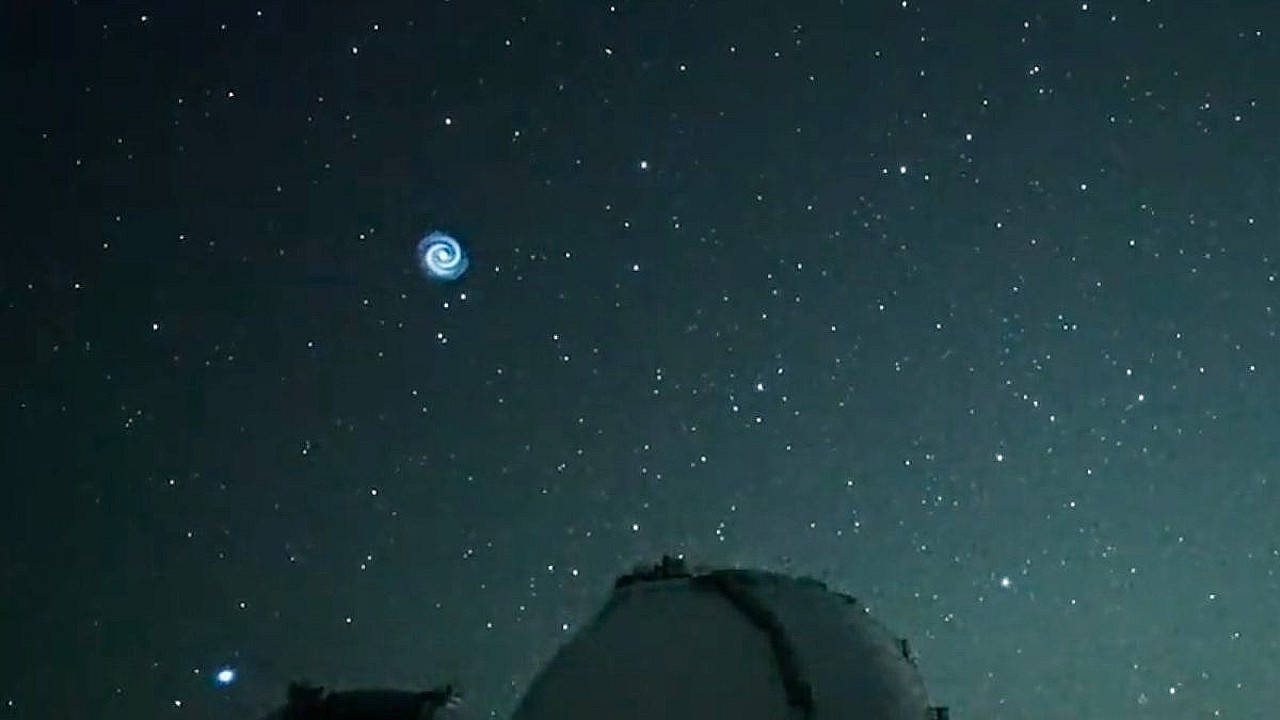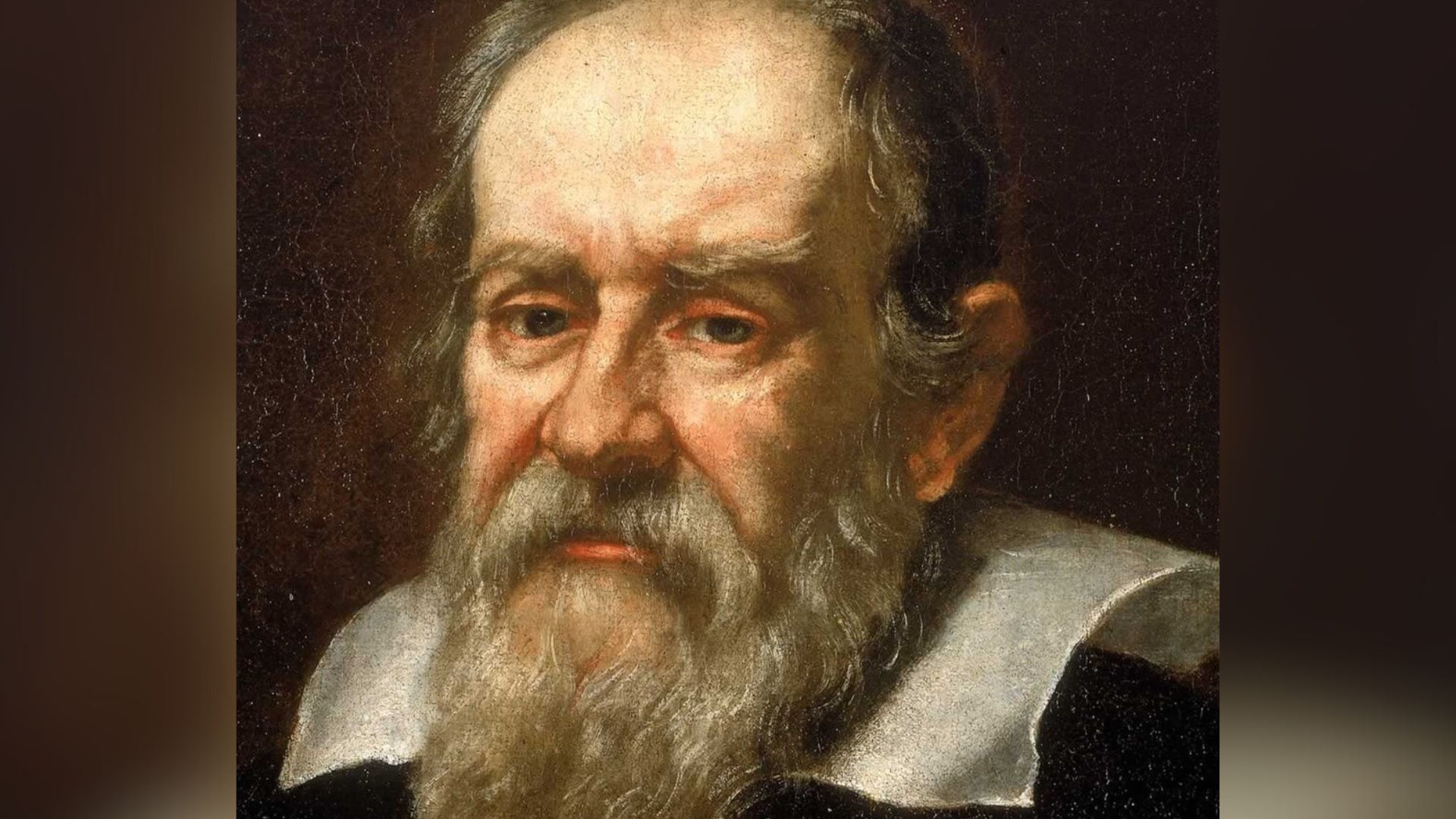Eerie blue spiral in night sky over Hawaii spawned by SpaceX rocket
It's not the first time a galaxy shape was associated with a Falcon 9.
A navigation satellite launched by SpaceX left a brief spiral visible over Hawaii, according to reports.
SpaceX sent a Global Positioning Satellite (GPS) into space for the U.S. Space Force on Wednesday (Jan. 18) at 7:24 a.m. EST (1224 GMT). Shortly afterwards, the Subaru Telescope spotted a mesmerizing spiral shape overhead.
"The spiral seems to be related to the SpaceX company's launch of a new satellite," Subaru Telescope officials from the National Astronomical Observatory of Japan wrote in a tweet. The missive also showcased an image of the spiral over their telescope atop Maunakea on the Big Island of Hawaii.
Citizen scientist and satellite tracker Scott Tilley, chiming in on the thread, said the position of the spiral was a close match for where the second stage Falcon 9 rocket was expected to be in the minutes after launch. (The first stage returned to Earth on a drone ship at sea.)
Related: 8 ways SpaceX has transformed spaceflight forever
On Jan 18, 2023 (HST), the Subaru-Asahi Star Camera captured a mysterious flying spiral over Maunakea, Hawai`i. The spiral seems to be related to the SpaceX company's launch of a new satellite.Watch the video:https://t.co/851Gz7VojV#SubaruTelescope pic.twitter.com/Np58fxpX9eJanuary 19, 2023
It's far from the first time a similar glowing, circular feature was spotted after a SpaceX launch. People in locations as distant as New Zealand have seen such spirals overhead after Falcon 9 activity.
During past appearances of the spiral, space watchers have said the shape arises as the upper stage of the Falcon 9 vents unneeded fuel during its long descent into the ocean.
Breaking space news, the latest updates on rocket launches, skywatching events and more!
"The upper stage was probably spinning on its longest axis to stabilize flight orientation, hence the spiral shape," Spaceweather.com wrote of a June 2022 launch. "Similar spirals have been seen after previous Falcon 9 launches."
Related: What's that in the sky? It's a SpaceX rocket, but it sure doesn't look like it
The Falcon 9 is known to leave behind many interesting patterns post-launch, such as "space jellyfish" in the predawn sky over Florida's Space Coast.
Those shapes happen when gas in the rocket engine's nozzles are at higher pressure than the atmosphere, and the gas is illuminated by sunlight, according to a past tweet from Chris Combs, a professor of aerodynamics and mechanical engineering at the University of Texas at San Antonio.
SpaceX has sent five missions to space in the first 19 days of 2023. If they keep up this pace, the company would send 96 rockets aloft by the time the year closes, but weather and technical factors can always induce delays. In 2022, SpaceX had a record-setting 61 launches, nearly doubling its 2021 record of 31 liftoffs.
Editor's note: If you captured a stunning view of a SpaceX launch and want to share it for an image gallery or story, let us know! You can send images and comments in to spacephotos@space.com.
Elizabeth Howell is the co-author of "Why Am I Taller?" (ECW Press, 2022; with Canadian astronaut Dave Williams), a book about space medicine. Follow her on Twitter @howellspace. Follow us on Twitter @Spacedotcom or Facebook.

Elizabeth Howell (she/her), Ph.D., was a staff writer in the spaceflight channel between 2022 and 2024 specializing in Canadian space news. She was contributing writer for Space.com for 10 years from 2012 to 2024. Elizabeth's reporting includes multiple exclusives with the White House, leading world coverage about a lost-and-found space tomato on the International Space Station, witnessing five human spaceflight launches on two continents, flying parabolic, working inside a spacesuit, and participating in a simulated Mars mission. Her latest book, "Why Am I Taller?" (ECW Press, 2022) is co-written with astronaut Dave Williams.


